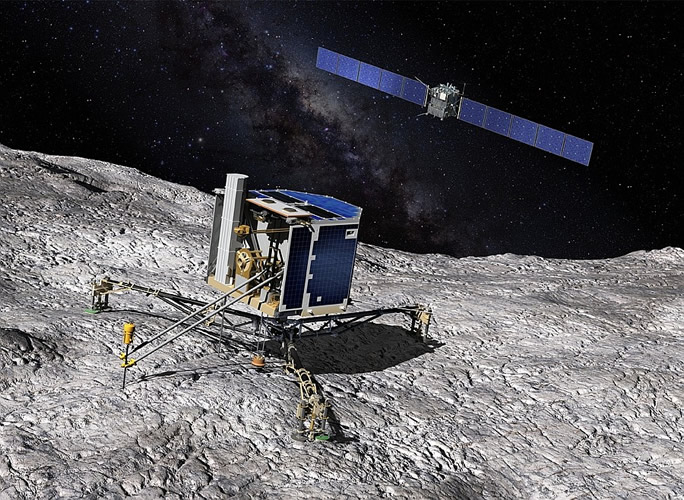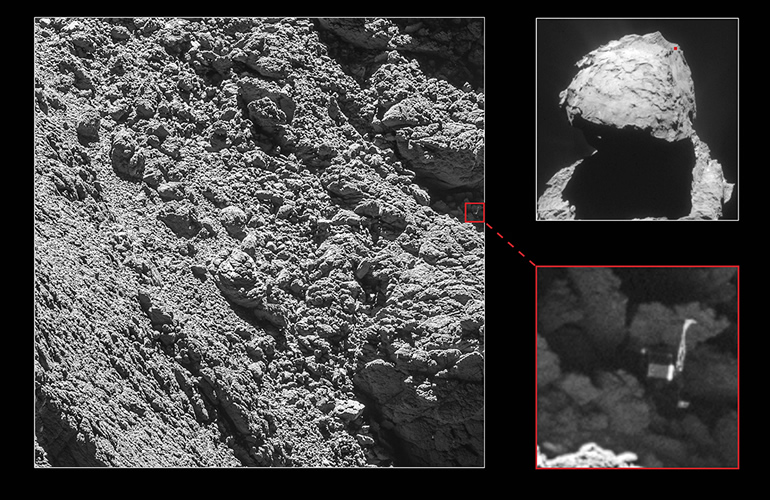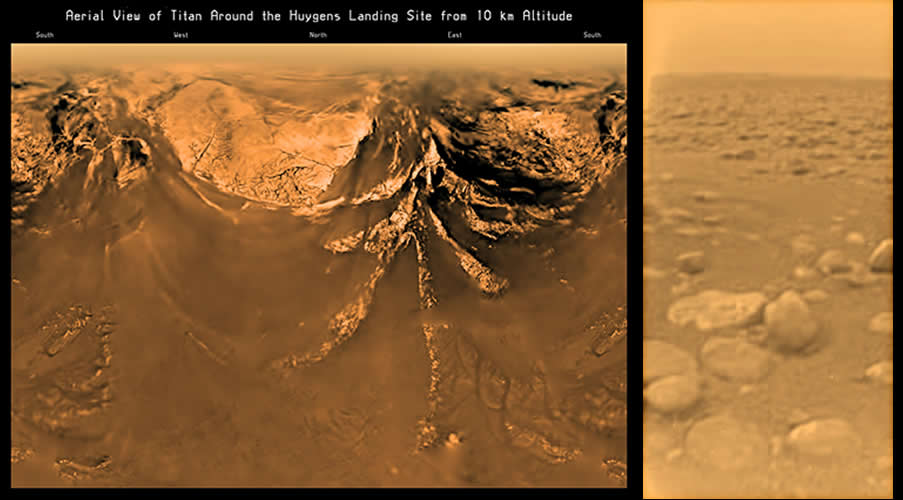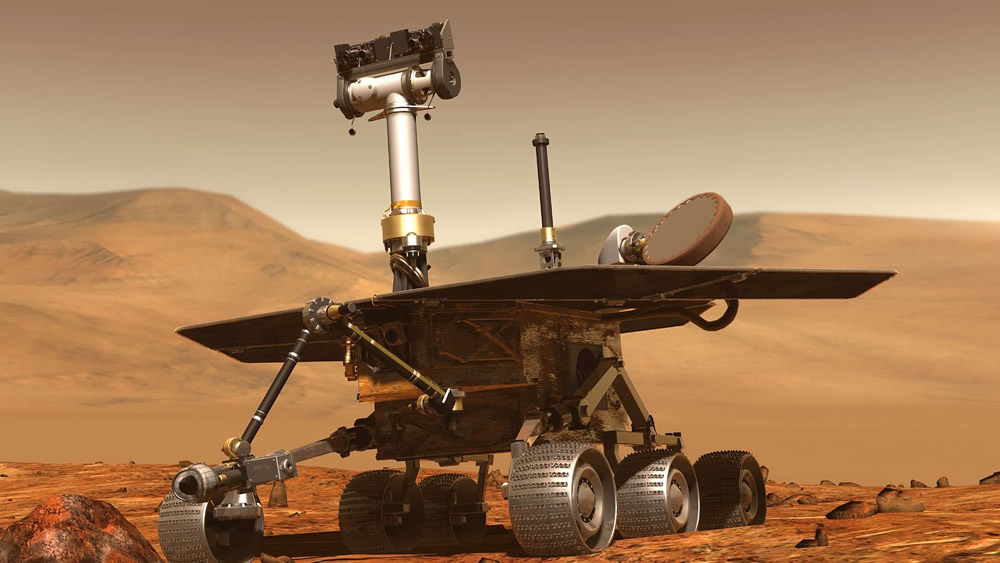Lander
11.26 - Understand the advantages and disadvantages of the major types of space probe:d) lander
11.27 - Know an example of each type of space probe, including target body and major discoveries, including:
d) lander – Philae (comet 67P/Churyumov–Gerasimenko)
A craft can land on another object, take measurements and if possible explore the surrounding area.
Advantages
- Landers can study the immediate environment and take precise geological and meteorological readings and conduct basic experiments.
- Landing on other bodies carry risk. Mars has a high rate of failure. As well as mechanical issues there may be environmental issues such as landing in bad weather or on a badly placed rock.
Disadvantages
- Landers may have limited (or no) capacity to move around freely and therefore only able to give a single one-time experience of the body
- Some landers such as Huygens on Titan or Mars Landers must be built in sterile environments to avoid any contamination from Earth.
Methods of landing
There are a number of methods landers use to descend to the surface. These include:
- Small exhaust Rockets to slow the landers descent
- Parachute opened in upper atmosphere to slow down lander. A heatshield that protects the craft from temperature increases is released. Sometimes the craft is covered in 'air bags' which deflate on surface.
- On a body with low gravity a soft Landing at a low angle and the craft bounces and skids to a halt.
Philae on Comet 67P/Churyumov–Gerasimenko
ESA, the European Space Agency sent the Rosetta spacecraft to Comet 67P/Churyumov–Gerasimenko and launched a lander Philae to the comet. Rosetta orbited the comet and took measurements of water vapour and to listen and relay Philae's communications. Philae was designed to soft land, using harpoons to attach to the surface.
It was designed to analyse the surface composition of the comet including drilling into the comet. It managed to take some analysis of water-rich surface chemicals and some imagery however the lander lost power as its harpoons failed to attach to the surface, it ended up at an angle in a crack below a cliff. It was soon after unable to communicate with Rosetta and lost power due to not receiving enough sunlight.
Other well known landers
The Cassini-Huygens project involved launching a lander (Huygens) to Titan from the orbiter Cassini. Huygens beamed back images from its descent by parachute and the surface.
The Mars Exploration Rovers were two landers that were designed to be mobile and travel around the planet. They were powered by solar panels and were active for many years.






 | © All Rights Reserved |
| © All Rights Reserved |